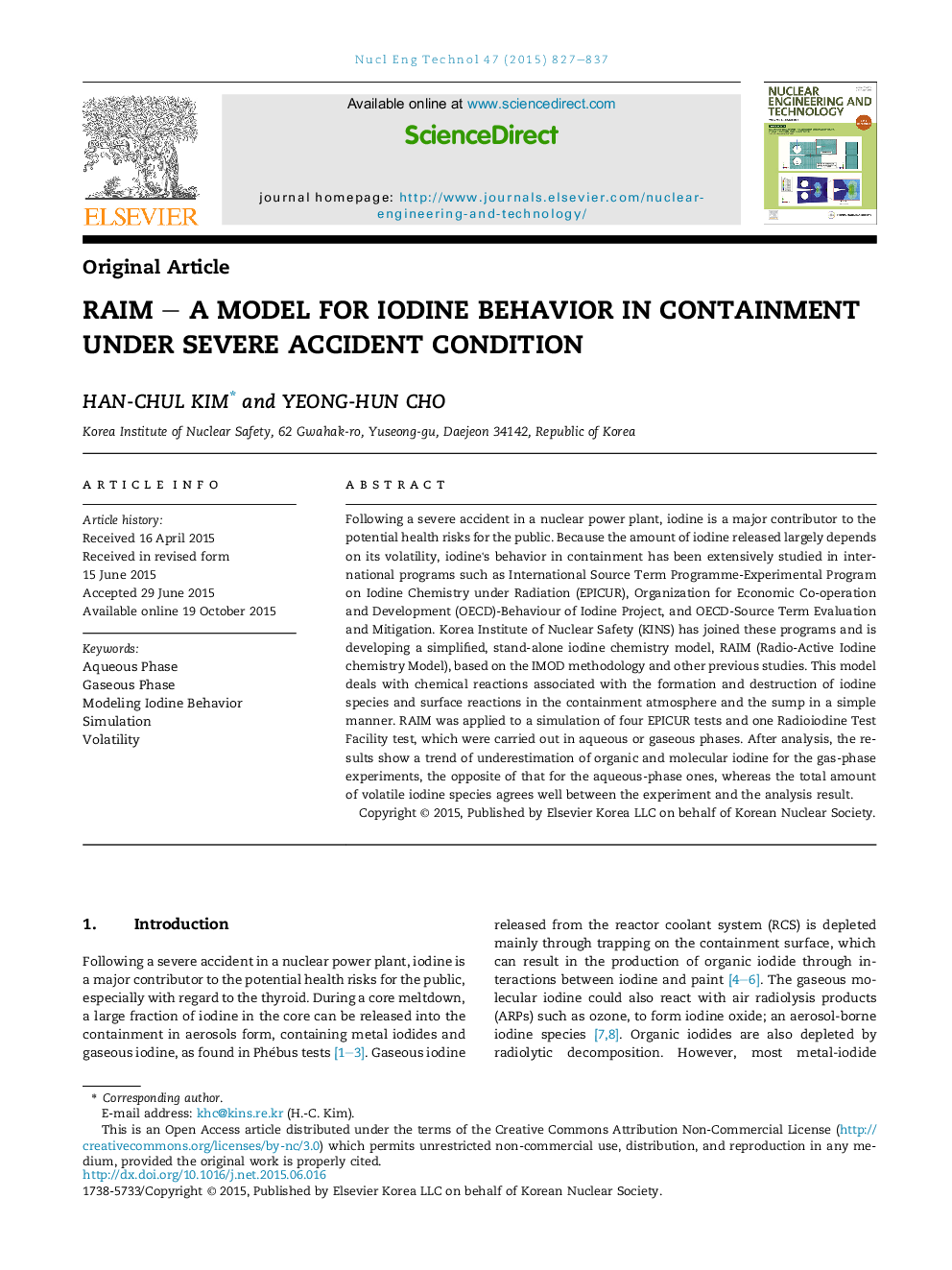| Article ID | Journal | Published Year | Pages | File Type |
|---|---|---|---|---|
| 1740062 | Nuclear Engineering and Technology | 2015 | 11 Pages |
Following a severe accident in a nuclear power plant, iodine is a major contributor to the potential health risks for the public. Because the amount of iodine released largely depends on its volatility, iodine's behavior in containment has been extensively studied in international programs such as International Source Term Programme-Experimental Program on Iodine Chemistry under Radiation (EPICUR), Organization for Economic Co-operation and Development (OECD)-Behaviour of Iodine Project, and OECD-Source Term Evaluation and Mitigation. Korea Institute of Nuclear Safety (KINS) has joined these programs and is developing a simplified, stand-alone iodine chemistry model, RAIM (Radio-Active Iodine chemistry Model), based on the IMOD methodology and other previous studies. This model deals with chemical reactions associated with the formation and destruction of iodine species and surface reactions in the containment atmosphere and the sump in a simple manner. RAIM was applied to a simulation of four EPICUR tests and one Radioiodine Test Facility test, which were carried out in aqueous or gaseous phases. After analysis, the results show a trend of underestimation of organic and molecular iodine for the gas-phase experiments, the opposite of that for the aqueous-phase ones, whereas the total amount of volatile iodine species agrees well between the experiment and the analysis result.
